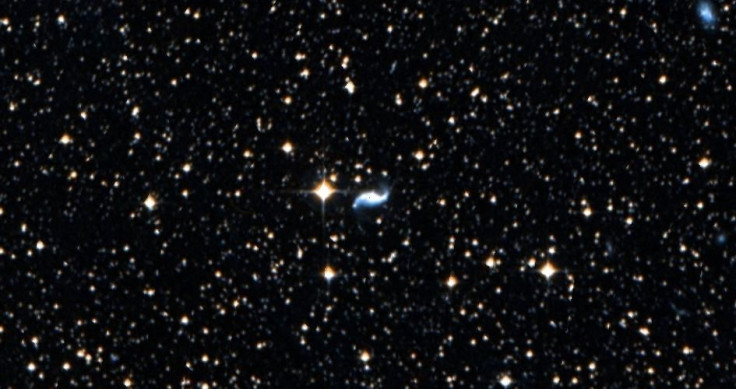Scientists Find Surprise In Supernova: X-Rays Coming From Star Explosion

Scientists have found X-rays bursting out of supernovas for the first time, an unexpected discovery that could change the way astronomers think about these space explosions.
The X-rays were coming from a certain kind of supernova, called type Ia (one-a). In that sort of thermonuclear explosion, a white dwarf that is in a binary system — in which two stars orbit the same point in space — sucks up material from its companion until it blows up. It’s not just a pretty sight; it also has a purpose: Typically scientists use the light from this event to figure out how far away the explosion occurred, which tells them something about how far away other space objects are as well.
But they got more than they bargained for with supernova 2012ca, which blew up in a galaxy 260 million light years away from Earth. According to a study in the journal Monthly Notices of the Royal Astronomical Society, the scientists also detected small amounts of X-rays coming from the explosion site. It wasn’t much but it was there.
“The amounts of X-rays they found were small — they counted 33 photons in the first observation a year and a half after the supernova exploded, and 10 in another about 200 days later — but present,” the University of Chicago explained, about observations made with the Chandra X-ray Observatory space telescope.
This isn’t the first time that X-rays have been found coming out of a supernova, but it is the first for this type of supernova. Scientists have seen this form of light coming from a type II, in which a massive old star dies with a bang, because that huge star ejects material beforehand. When the star finally collapses and explodes, the shockwave from the explosion busts through the ejected material, which is dense, and makes “a shower of X-rays.”
But in a type Ia supernova, scientists didn’t think the white dwarf lost much mass before the big boom or had envelopes of dense material hanging around them.
“This certainly appears to be a Ia supernova with substantial circumstellar material, and it looks as though it’s very dense,” study co-author Vikram Dwarkadas said in the university statement. “What we saw suggests a density about a million times higher what we thought was the maximum around Ia [supernovas].”
The mass of the material was too great to have come from the exploding white dwarf’s companion star.
“If it’s truly a Ia, that’s a very interesting development because we have no idea why it would have so much circumstellar material around it,” Dwarkadas said. “This once again raises the question of how exactly these strange supernovas form.”

The scientists are keeping up their search, according to the university, looking for X-rays and radio waves coming from supernovas to better understand how they happen.
“It is surprising what you can learn from so few photons,” lead study author Chris Bochenek said in the UChicago statement.
© Copyright IBTimes 2024. All rights reserved.





















